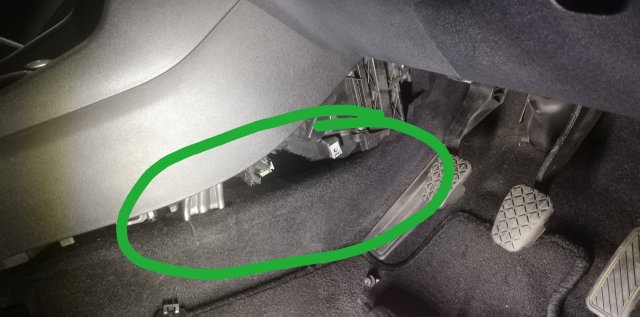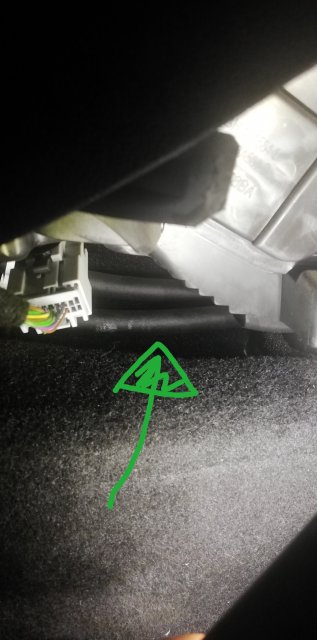The noise as shown in the vid, is from the shifter X-Y cables that are from the shifter (Manual) to the transmission shift assembly inside a small black housing cover right on top of the transmission.
The noise - is from the transmission - engine - but it's transmitted to the passenger compartment thru those shifter cables.
That is those hoses you see. they would head off to the shifter assembly.
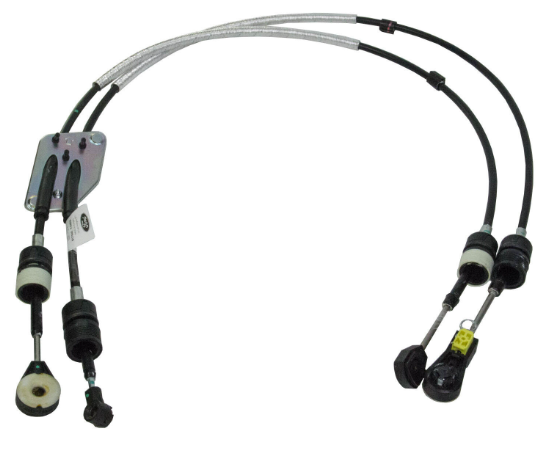
Part Number:
8A6Z 7E395-A
(Motorcraft)
OR
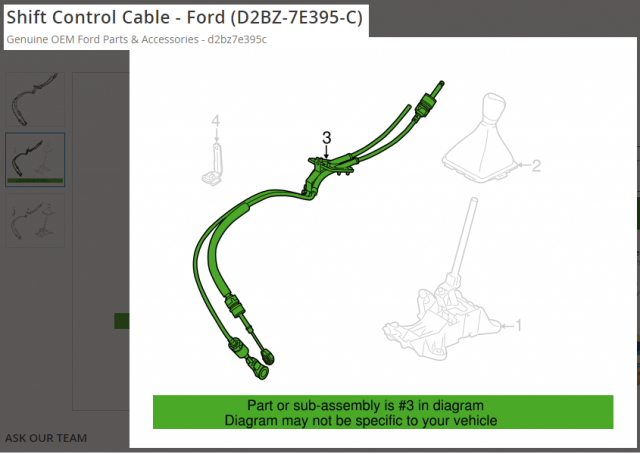
So the noise is from that "gymbal and cable" assembly - that to me transfers or translates the motions of the shifter and your input. The noise more than likely from the clutch and throw-out bearing - follows it back into the passenger compartment.
The noise can also be from the shifter forks, when the shifter is at "idle" or neutral - the shift forks for all the gears are at rest. Doesn't mean much but read further into the issue of the shifter aspects and the brackets at the transmission side - you have three forks all of them arranged on a rod tied to one cable (your Up and Down) and another - side to side which controls WHICH fork is chosen. This side to side is different - they are tangs that are notched and lets the forks of the other two float at their resting spot - when you select a gear - you have to move the side-to-side which changes which tang this rod lines up to - the up or down motions press or pull the rod, and that assigned fork then works the input of the up and down one - since you moved that knob - to one side or the other allowing the gear to move in or out and the opposite side of that gear to move out or in.
So the chirp - if you press in the clutch and it still is there, then the chip can only be from a motion - which is not at the transmission, but either at the clutch and flywheel or towards the engine.
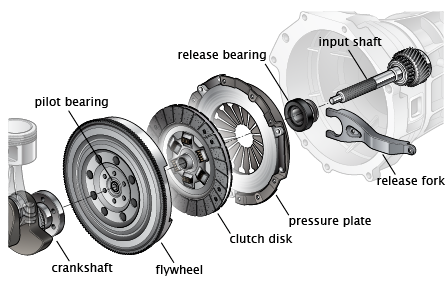
So - again, pressing on the brake, push the clutch in all the way - still a chirp? The engine side is causing this - you should hear gear churn and lash while the transmission is turning with the engine. This is normal. Then when you take away the energy to turn the transmission even in neutral - through pressing in the clutch - the transmission spins down - letting you shift into or out of gear easily.
If the chirp disappears. Then the transmission or clutch assembly is causing this - so attempt to press the clutch in at various pressures on the pedal - to affect the ability of the throw-out bearing, in the above, it's the Release Bearing - the fingers or the piston located and using the pressure plate - and help determine the amount of pressure where the noise stops, is the device that is taking in the pressure and causing the noise.
IF say, a finger is rubbing or worn, the chirp would lessen or disappear when you apply enough pressure on the pedal to move the piston against the fingers - it would indicate clutch assembly.
IF the noise continues even with the clutch in all the way, then the flywheel, or even a water pump bearing - can cause this chirp or if you have a mechanics stethoscope - you might track it down to the very spot making the chirp - which in the stethoscope, sounds more like a squeal - by using such a tool, the loudness reveals that location is where the problem lies. Alternator or AC pump can do this too.
But the rear of the engine part, tends to lead me to the transmission and perhaps a cable shifter assembly rub from extra tension it puts on either Y (your north and south, Up/Down on that Fork) or X (your selector for which fork - locator rod side to side, East/West motion) - the assembly is in a box, and it's got a cover. So do you have the IB5 or the IB5i - have similar shifter parts, but their location of torque applied is slightly different. - it may mean they have to tweak the shifter cable - but which one?
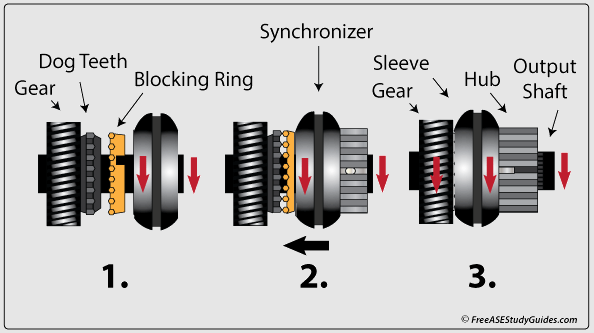
The Transmission has a set of gears that track the rotation of the shaft they are on, and are sandwiched between the main gears as a means to help those main gears, are another set called synchronizers - the gears are on a shaft, but do not necessarily rotate as the speed of the shaft they are on, the synchronizer gears are, but in the splines, these main gears use a means of floating on the shaft and there are the synchronizers on the splines of that shaft turning at similar speed.
So not to go too deep, the part I'm concerned about is at the box. Box where the shift levers are, the cables go into it.
These cables - to stay rigid enough to transfer the input from you, use brackets on that box to hold them fast to the transmission. As you drive there are motor mounts that allow the engine and tranny to move - the cables give you enough flexibility to allow the vehicles engine to move on its mounts but allow you to shift - hence those brackets.
IF you struck something or the box got damaged, those brackets that hold the cable in place to transfer your input to the gears (translate in a way) can CHANGE their aspect in relation to the shifter you use, and the gearbox's own shift forks and levers. IT can induce a rub you don't want.
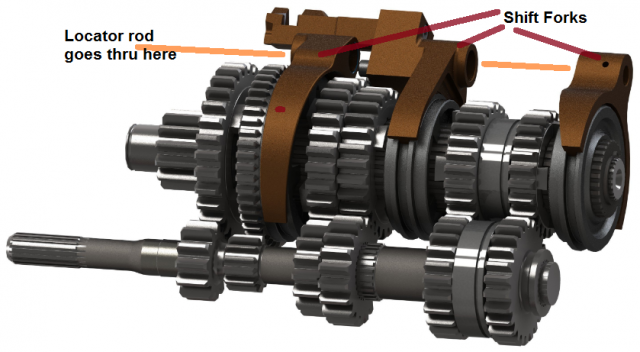
You know as time progressed, your vehicle shift lever can migrate - from the symmetrical location just above the centerlines of the shift aspect the transmission sees and center of the shift rectangle you see (where your shifter is) - to a drift to the left or right - even up or down - so let the thing go into neutral and check to see if there is excessive free play - or not enough free play - in the shifter - and where it "rests" at - if it's in the center - then see which cable you can make the noise change or disappear from by moving left or right or up or down - because something is not centered.
The speed increasing is from the PCM anticipation of take off - where the engine now idles up in speed - only so much but is sensitive to your throttle input. The process is normal - I wish myself, FORD didn't do this - it wastes a lot of gas in stop start traffic - if there was a way to disable this I'd love to know how. But the chirp "increasing" is from the idle-up event - so again it places more focus on the clutch and engine than the transmission - so to me the transmission is the messenger, but the chirp is from the power delivery side - not the transmission

